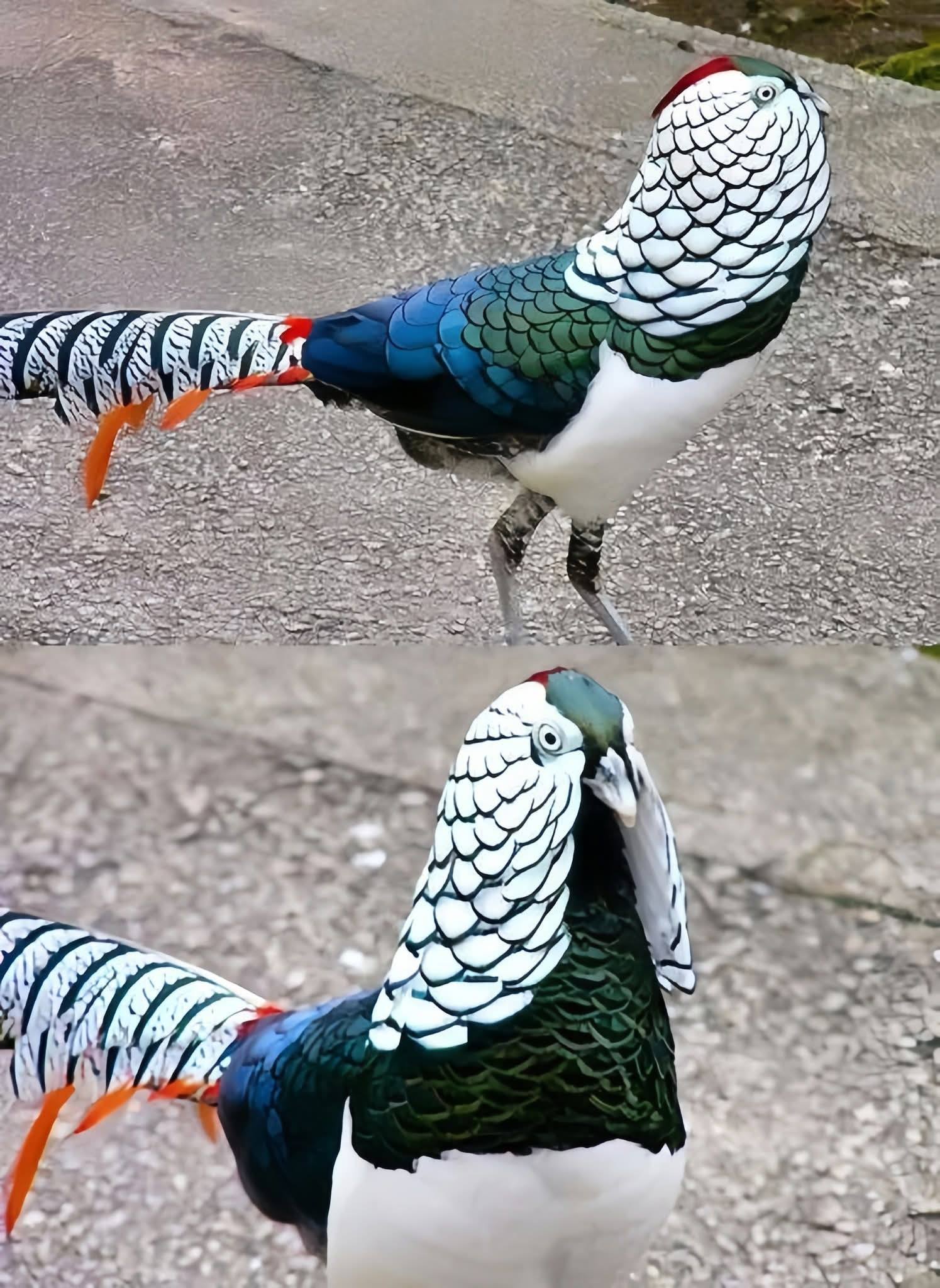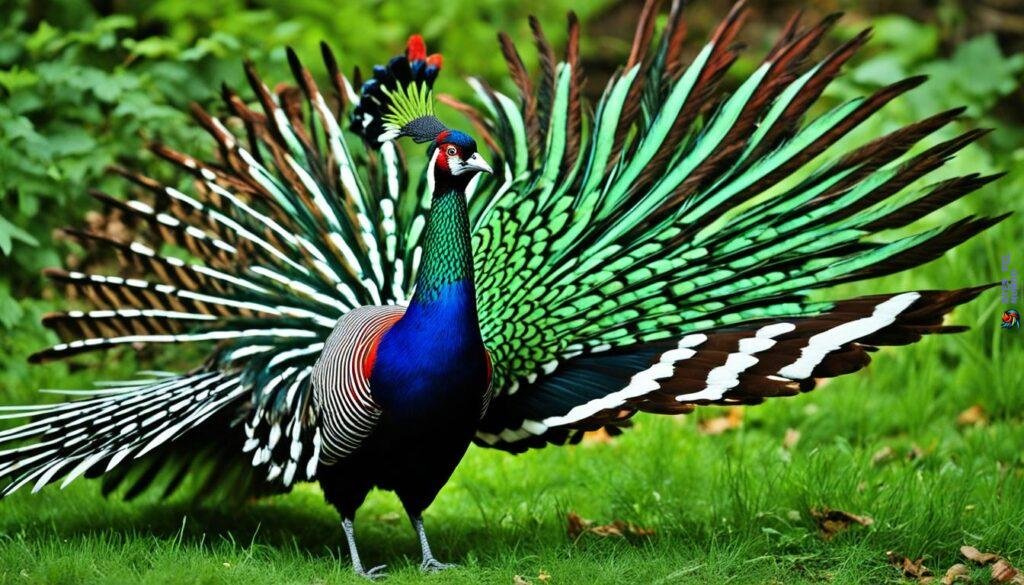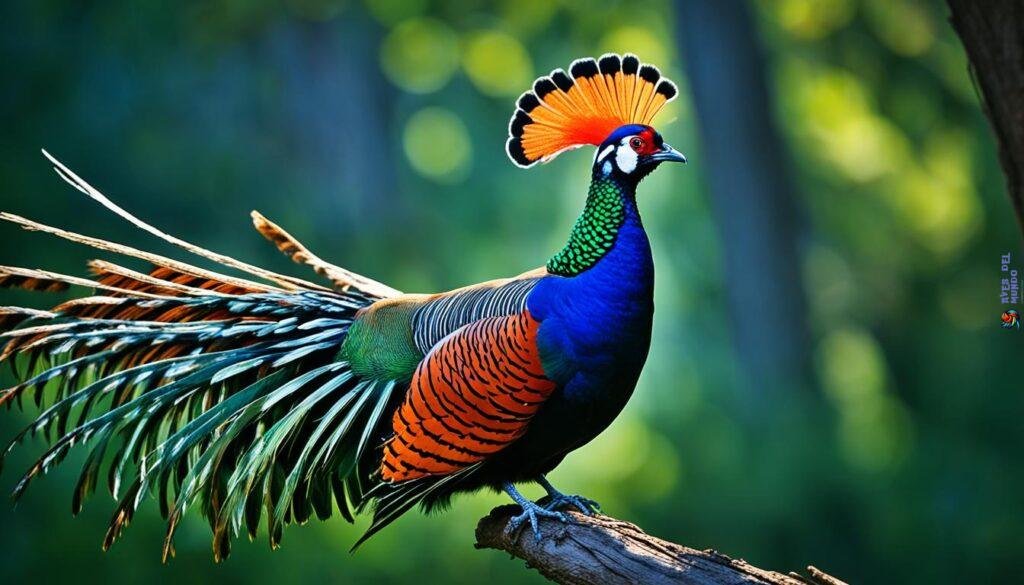The Regal Beauty of the Forest: The Lady Amherst’s Pheasant


The Regal Beauty of the Forest: The Lady Amherst’s Pheasant
In the heart of the mist-shrouded forests of southwestern China and northern Myanmar, a bird of such surreal beauty struts silently through the underbrush, largely unseen by the world. Cloaked in layers of color that seem too vivid to be real, the male Lady Amherst’s Pheasant is a living work of art. With his elegant plume, shimmering body, and flowing striped tail, he is the very definition of avian royalty — a creature that effortlessly combines subtle grace with vibrant flamboyance.
This article takes you deep into the life and world of the Lady Amherst’s Pheasant (Chrysolophus amherstiae), exploring its dazzling plumage, secretive habits, courtship rituals, and the cultural and ecological significance it holds in the landscapes it inhabits.
Origins and Habitat: Deep Forest Royalty
Lady Amherst’s Pheasant is native to the dense mountain forests and bamboo thickets of southwestern China and parts of northern Myanmar. The species was named after Sarah Amherst, the wife of William Pitt Amherst, a British governor-general of India in the early 19th century, who was credited with sending the first specimen to London.
These birds thrive in subtropical and montane forests at elevations ranging from 1,200 to 3,600 meters. Unlike birds that flaunt their colors in open plains or high branches, Lady Amherst’s Pheasant prefers the secretive shadows of undergrowth. This reclusive nature makes sightings in the wild rare and fleeting — often no more than a flash of red or a glint of iridescent green vanishing into the foliage.
Despite their aversion to open spaces, they have successfully been introduced into other environments. In the United Kingdom, for instance, small feral populations once roamed, particularly in southern England. However, numbers have dwindled, and they are now seldom seen outside captivity.

The Male’s Splendor: Nature’s Parade Costume
The male Lady Amherst’s Pheasant is a walking kaleidoscope of color and texture. His head is capped in a scarlet crown, fading into a metallic green neck. His most striking feature is the cape-like white ruff — feathered in layered black-tipped scales that drape over his shoulders like ornate armor. When fluffed during courtship, this ruff expands dramatically, resembling a fan or regal collar.
His back shimmers in iridescent blues and greens, while his underparts are clean, snowy white. Perhaps the most eye-catching element is the long, flowing tail, banded in black and white with splashes of fiery orange toward the base — a flag that seems to defy gravity with its elegance and precision.
This extraordinary combination of features serves not only aesthetic function but biological purpose. In a world where survival often depends on stealth, the male Lady Amherst’s extravagant appearance is an evolutionary paradox: his vivid feathers make him highly visible, yet he manages to survive by mastering stealth and evasion.
The female, by contrast, wears more subdued colors. Cloaked in earthy browns with delicate barring, she blends seamlessly into her forest floor habitat, an essential camouflage for nesting and rearing young.
Secret Lives and Elusive Movements
Lady Amherst’s Pheasants are ground-dwelling birds that forage in the leaf litter for seeds, roots, and insects. Though they possess the ability to fly, they seldom do so unless threatened. Their movements are quick and precise, darting between shadows, melting into the forest with almost supernatural ease.
They are crepuscular creatures — most active during early morning and late evening hours. During the heat of the day, they rest in the cover of thickets, venturing out only when the light is gentle and the forest quiet.
Their vocalizations are understated but distinct: soft hoots, low whistles, and subtle calls exchanged during foraging or mating displays. These sounds carry through the woods like whispered messages, helping individuals maintain contact without drawing the attention of predators.
Courtship Rituals: The Dance of the Cape
Mating season reveals the true theatrical potential of the male Lady Amherst’s Pheasant. When wooing a female, he puts on an elaborate performance that rivals the most extravagant ballet. The male begins by circling the female in measured, deliberate steps. His ruff is fluffed to its fullest extent, his body angled just so, and his tail fanned in a graceful arc.
He may spread one wing and lower his head while emitting a series of rhythmic calls — part vocal serenade, part visual spectacle. The goal is to impress, to mesmerize, to demonstrate not just his fitness but his aesthetic superiority.
This display is not without competition. In areas with multiple males, fierce rivalries erupt as each tries to outshine the other in color and choreography. In such cases, only the most dazzling — and the most convincing dancer — wins the right to mate.
Reproduction and Life Cycle
Once the female is impressed and mating occurs, she selects a well-hidden spot on the forest floor to lay her eggs. Typically, she lays between 6 to 12 eggs in a clutch, which she incubates for about 22–24 days.
The chicks are precocial, meaning they hatch with their eyes open and are able to walk and feed themselves within hours. However, they remain under the mother’s guidance for several weeks, learning essential survival skills. Males play no role in parenting and often leave soon after mating.
In captivity, breeding has been relatively successful, especially in aviaries with sufficient space and natural cover. This has helped prevent the total loss of the species from certain areas, although their genetic purity may be threatened by hybridization — particularly with the closely related Golden Pheasant (Chrysolophus pictus).
Cultural Impact and Symbolism
Though not as culturally revered as the peacock in India or the phoenix in Chinese mythology, the Lady Amherst’s Pheasant has become a symbol of hidden beauty and understated elegance. In Chinese folklore, pheasants often represent nobility and prosperity, and the Lady Amherst’s vivid patterns are seen as emblems of celestial harmony.
Its popularity in aviaries across Europe has made it a favorite among bird enthusiasts, who admire not only its appearance but its curious, dignified behavior. The species’ name, invoking a titled British lady, further cements its association with aristocracy — both human and avian.
Conservation Concerns and Challenges
While not currently listed as endangered, Lady Amherst’s Pheasant faces a number of conservation issues. Habitat destruction due to logging, agriculture, and infrastructure development continues to erode the forests of Yunnan and Myanmar.
Their elusive nature makes it difficult to track population numbers accurately, but some studies suggest their wild numbers may be declining. In addition, the introduction of non-native species and hybrids poses a threat to genetic integrity.
Conservationists recommend habitat protection and careful monitoring of captive populations to ensure species purity. Preserving bamboo forests and subtropical thickets is key — not just for this bird, but for the wide variety of flora and fauna that share its habitat.
A Vision of Evolutionary Art
The Lady Amherst’s Pheasant stands as one of nature’s most exquisite achievements in design. Every feather, every shimmer of light on its back, every whisper of movement through leaves speaks of an evolutionary journey shaped by both natural selection and the unspoken demands of beauty.
It’s hard not to anthropomorphize the bird — to imagine it aware of its own grandeur, to believe that it knows how breathtaking it is. But the truth is more poetic: this pheasant is the product of millennia of adaptation, where color, stealth, and ritual converged to create something truly extraordinary.
In a world often dominated by monotony, the Lady Amherst’s Pheasant is a brilliant reminder of the diversity and creativity inherent in nature. It asks for little — just a quiet patch of forest, a chance to live and perform its ageless dance.
Closing Reflections: Seeing Beyond the Feather
To truly appreciate the Lady Amherst’s Pheasant is to recognize not just its aesthetic charm, but the quiet life it leads in the shadows. It is not a bird of spectacle for the sake of fame; it does not seek the sunlit stage. Rather, it thrives in obscurity, flourishing in forests where light filters through leaves in delicate mosaics — much like the bird itself.
It teaches us something important about beauty: that it does not always need an audience. That splendor can bloom unseen, dignity can dwell in silence, and grace may glide across the forest floor with barely a whisper.
In the end, the Lady Amherst’s Pheasant is more than just a beautiful bird. It is a symbol of the wild’s infinite creativity, a creature whose feathers tell stories of evolution, mystery, and quiet majesty.











